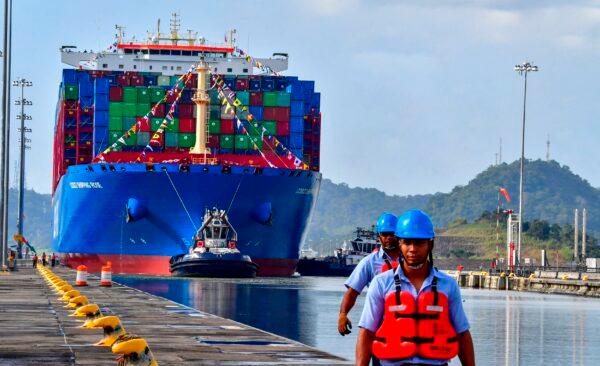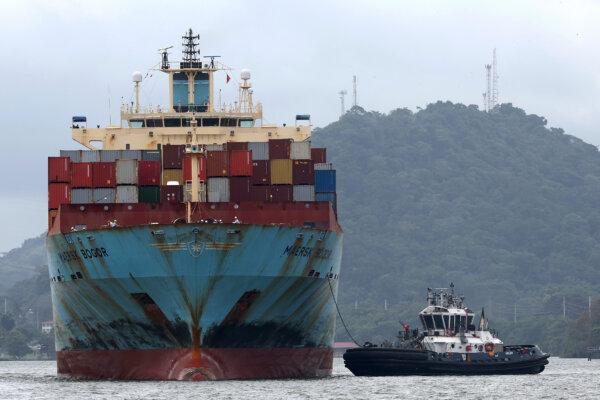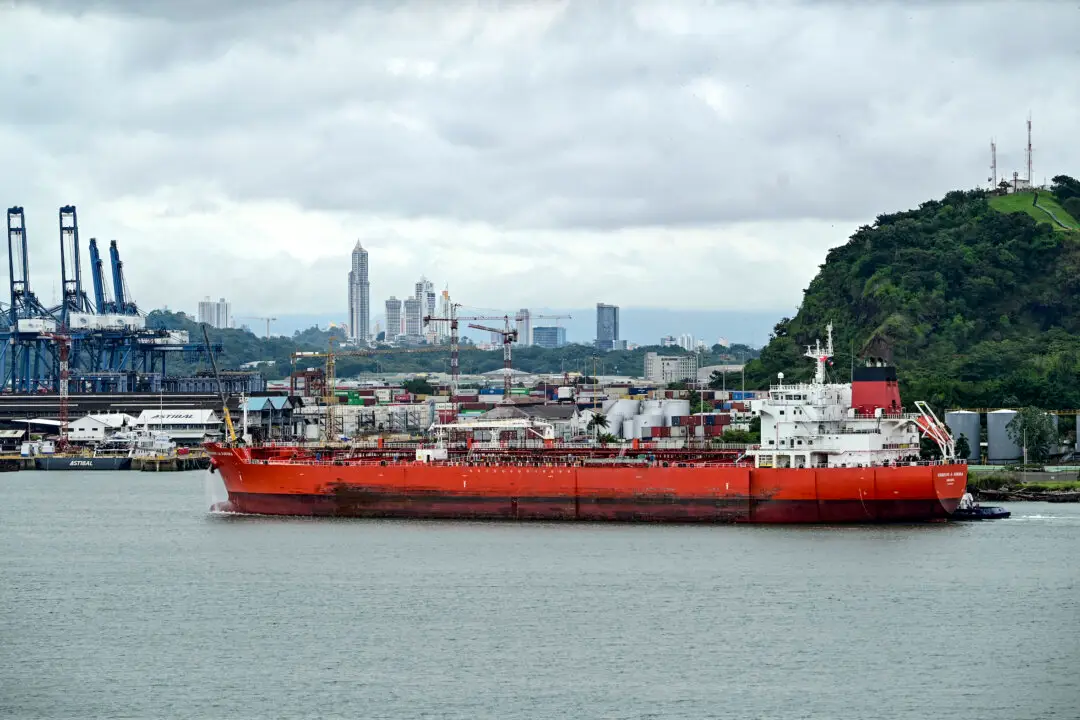One of the world’s busiest and most significant shipping routes, the Panama Canal cuts weeks of transit time off trade and travel.
President-elect Donald Trump has said he will take back control of the Panama Canal from the nation’s government if U.S. interests are not protected, in line with the Carter–Torrijos Treaty of 1977 under President Jimmy Carter.
One of the world’s busiest and most significant shipping routes, the Panama Canal cuts weeks of transit time off trade and travel—the majority of which is seeking access in and out of U.S. ports.
“Considered one of the Wonders of the Modern World, the Panama Canal opened for business 110 years ago and was built at huge cost to the United States in lives and treasure,” Trump said in a statement posted to Truth Social Dec. 21.
Around 5,600 workers died in efforts to build the canal, in addition to the 6,000 that died making the original Panama Railroad, according to official estimates.
The 51-mile-long canal transects the narrowest part of Central America to connect the otherwise separated Pacific and Atlantic Oceans, transforming a several-week and thousands-miles journey around Cape Horn to an 8- to 10-hour transit. It is currently Panama’s single largest source of income, and it generated almost $5 billion in revenue for the country in 2024, despite challenges posed by a regional drought.
Under the 1977 treaty, the United States handed sovereignty of the canal back to Panama over 20 years ending in 1999, although it retained the right to military action to secure the canal from foreign aggression or if it was being used to interfere with U.S. interests.
Trump said Panama has been charging the United States, its Navy, and corporations doing business in the United States “exorbitant prices and rates of passage.”
“This complete ‘rip-off’ of our country will immediately stop,” Trump said, urging local officials to reform the current fee structure that has been “very unfair and injudicious” to U.S. commerce.
“Especially knowing the extraordinary generosity that has been bestowed to Panama by the U.S.,” Trump said.
“Teddy Roosevelt was President of the United States at the time of its building, and understood the strength of Naval power and trade,” Trump said, referring to the United States’s 1904 payment of $10 million to Panama and 33 subsequent payments of $250,000 for the U.S.-led construction and control of the “Canal Zone” under the Hay-Bunau-Varilla Treaty.
Just a year earlier, U.S. backing had resulted in Panama declaring its independence from Colombia.
The Panama Embassy in Washington didn’t immediately return a request from The Epoch Times for comment.Trump called the canal a “vital national asset for the United States, due to its critical role to America’s economy and national security.”
More than 70 percent of trade transiting the canal is bound either to or from the United States. China’s volume of trade through the canal comes in second—and nearly 60 percent of the container ships from Asia bound for the U.S. East Coast pass through the Panama Canal.
The Chinese Communist Party (CCP) has been making efforts in recent decades to grow its influence in the region, expanding its soft power in Panama through a variety of programs, such as investments in Panama’s mining rights and infrastructure and developing CCP-controlled media in the Spanish language.
Since the late 1990s, Hong Kong-based Hutchison Whampoa gained control of two of the five ports surrounding the canal: Balboa on the Pacific, and Cristobal on the Caribbean.
Although the United States remained the top source of foreign direct investment in Panama, the first Trump administration grew increasingly concerned that the Panamanian government had already made extensive concessions to Chinese interests along the Canal Zone, when an estimated 43 percent of the zone’s activities fell under Chinese control.

In 2017, Panama also switched its diplomatic relations from Taiwan to the communist regime in Beijing—catching Washington by surprise.
A year later, it also became the first Latin American country to join China’s controversial Belt and Road Initiative, although many projects have since been suspended following public backlash over the terms of the agreement.
“I am not wrong in saying that since Panama broke relations with Taiwan to establish them with China, the country’s independence has been extremely compromised,” Euclides Tapia, professor at the School of International Relations of the University of Panama, told the U.S. Southern Command’s security magazine Diálogo in March.
The posting of U.S. ambassador to Panama sat empty during the entire Trump administration due to partisan objections that blocked the president’s nominees—leaving an opening for Beijing to advance its interests in the important nation of 4.3 million.
In 2018, a China-link consortium consisting of state-owned enterprises won a bid for constructing a fourth bridge over the canal. At the time, former U.S. diplomats said they were often faced with the challenge of having their independent investors from the private sector competing with Chinese investors with the backing of Beijing.
U.S. military leaders were raising security concerns about China-linked projects along the canal, as even private Chinese firms are not free from CCP control. They warned that China-linked enterprises could become dual-use entities at critical times, reporting directly from the canal to the CCP.
During the Biden administration, an ambassador wasn’t confirmed until late September 2022: former U.S. Ambassador to El Salvador Mari Carmen Aponte.

“The United States has a vested interest in the secure, efficient, and reliable operation of the Panama Canal, and that was always understood,” Trump said in his Saturday post. “We would and will never let it fall into the wrong hands!”
“When President Jimmy Carter foolishly gave it away, for one dollar, during his term in office, it was solely for Panama to manage, not China, or anyone else,” he said.
“It was not given for the benefit of others, but merely as a token of cooperation with us and Panama. If the principles, both moral and legal, of this magnanimous gesture of giving are not followed, then we will demand that the Panama Canal be returned to us, in full, and without question. To the officials of Panama, please be guided accordingly!” the president-elect said.

